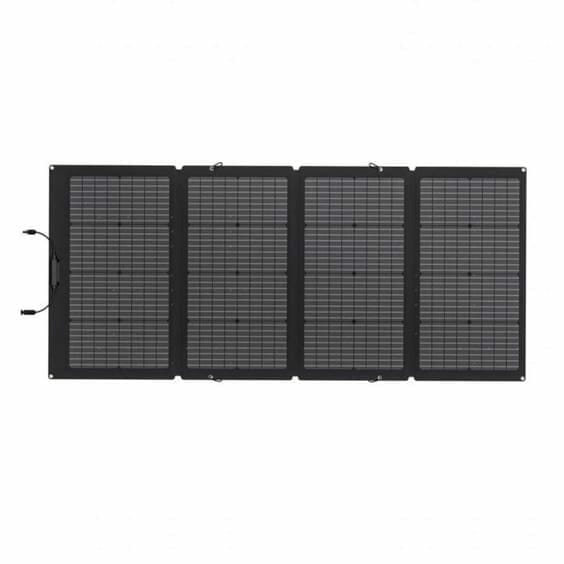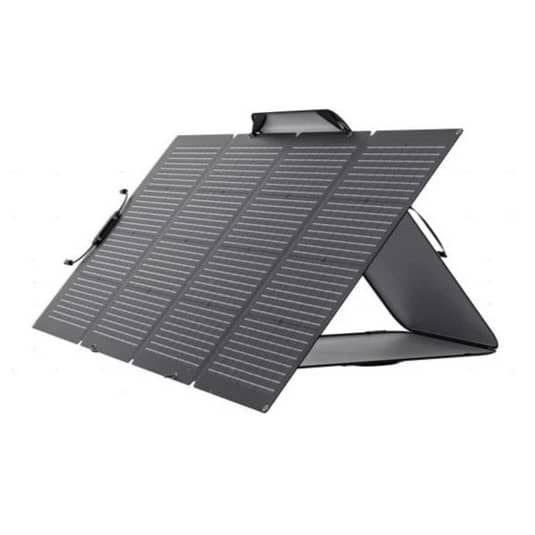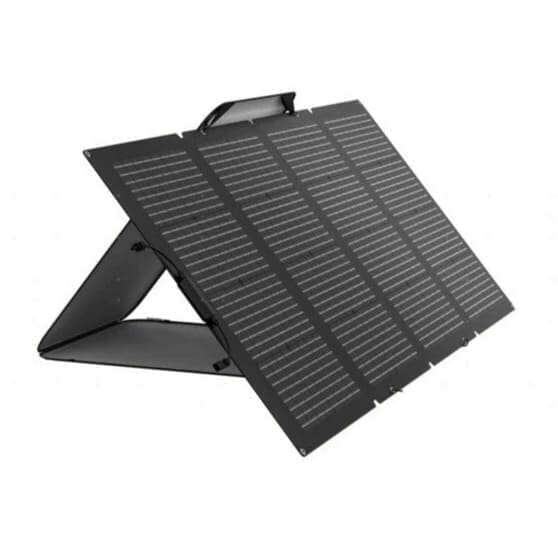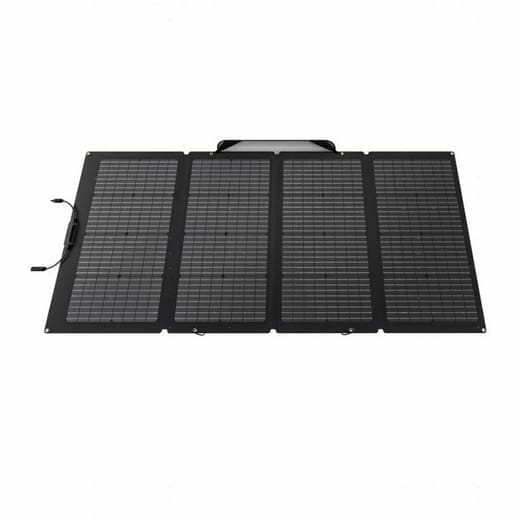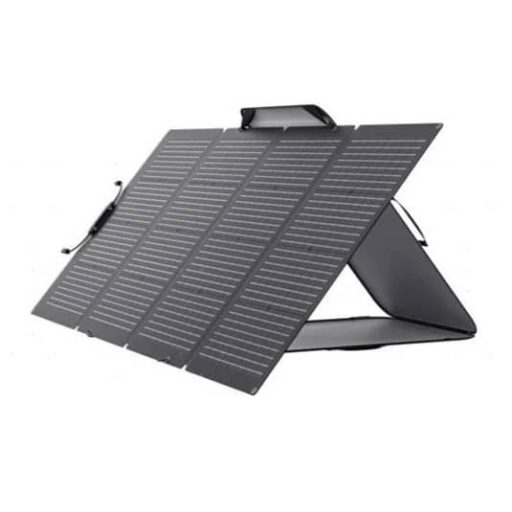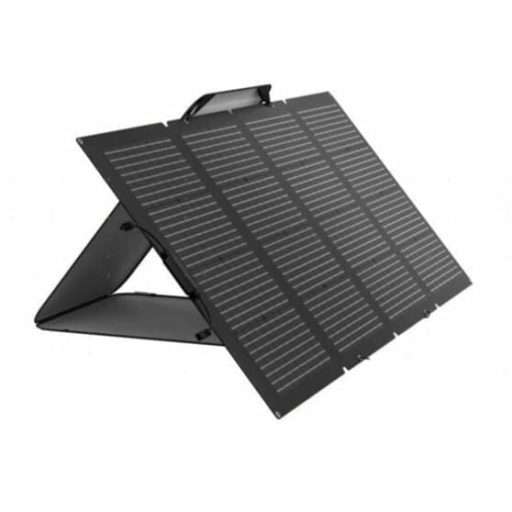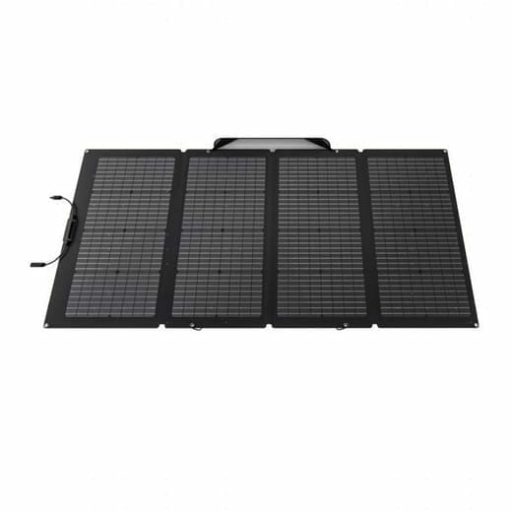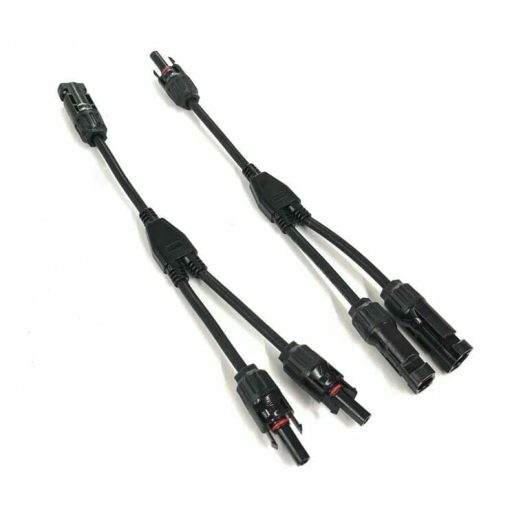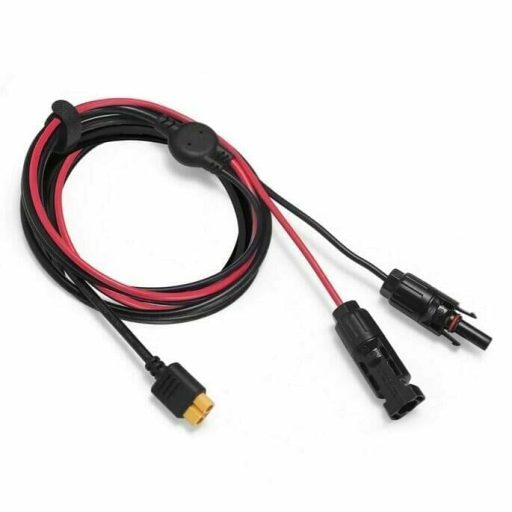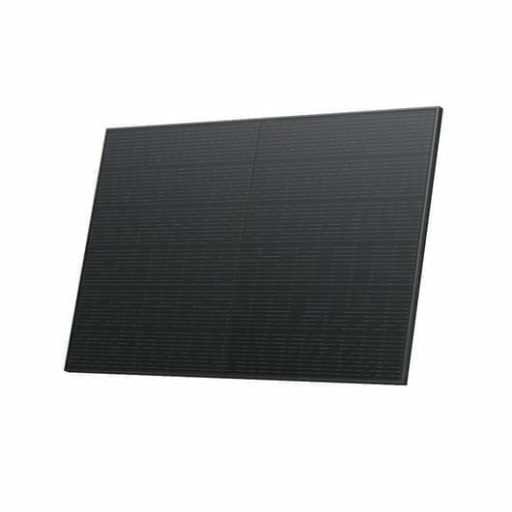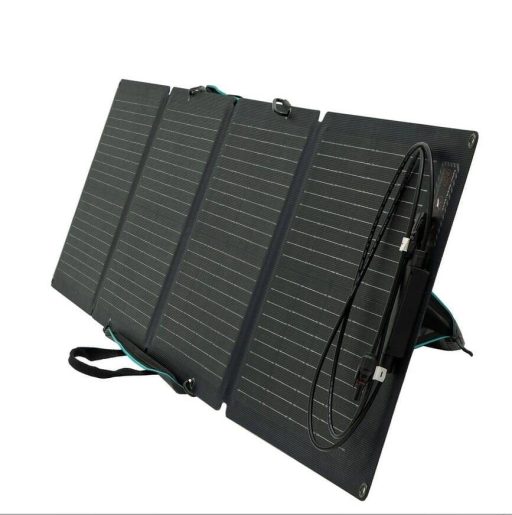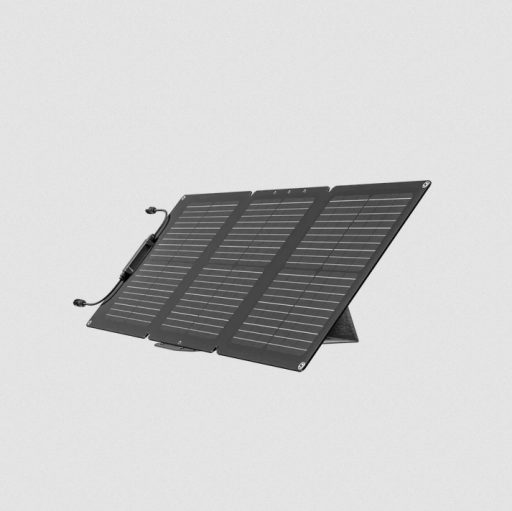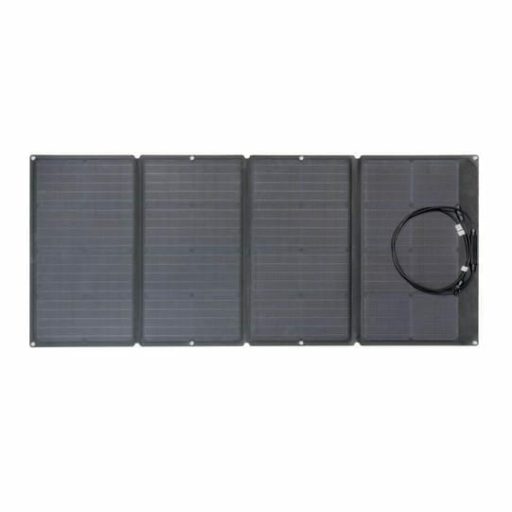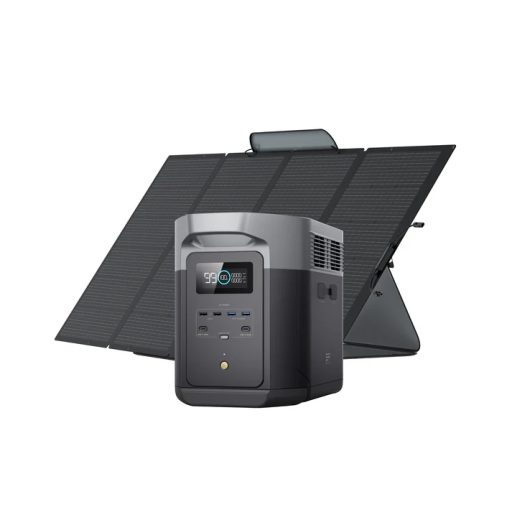R11,499.00 Inc. VAT
- Collect more energy with a two-in-one bifacial design
- Durable tempered glass that’s built to last
- Up to 23% conversion rate
- Self-supporting with an adjustable angle
- Durable with IP68 waterproof rating
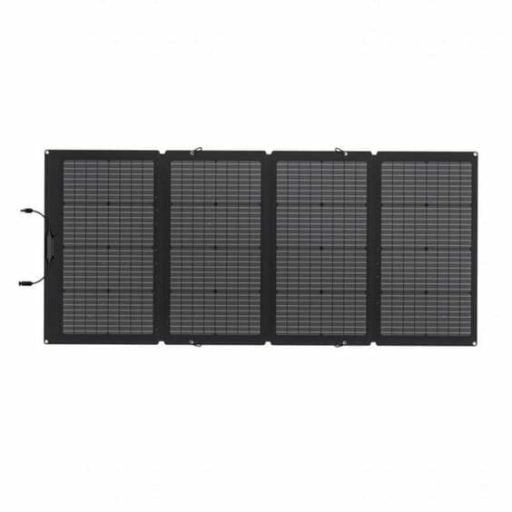
Universal – Seamless – Foldable – Portable

Built to last.
The thin, one-piece tempered glass design makes it five times tougher than comparable panels, it can withstand heat up to 300°F too. Safe to say it can withstand the elements.

Powerfully portable.
It’s a portable solar panel designed from the ground up to be compact. 10% smaller than comparable 220W panels, it saves space with thinner tempered glass, and less surface area required for the same input.

More than a carry case.
It comes with its own carry case so you can take it anywhere. Once you arrive at your destination, simply unfold it and use it as a kickstand to get your sun exposure just right.

And it’s waterproof too.
We’ve raised the bar with this panel. It’s completely water and dust-tight. Rain, wind or shine, your panel is safe with an IP68 waterproof rating.

What's in the box
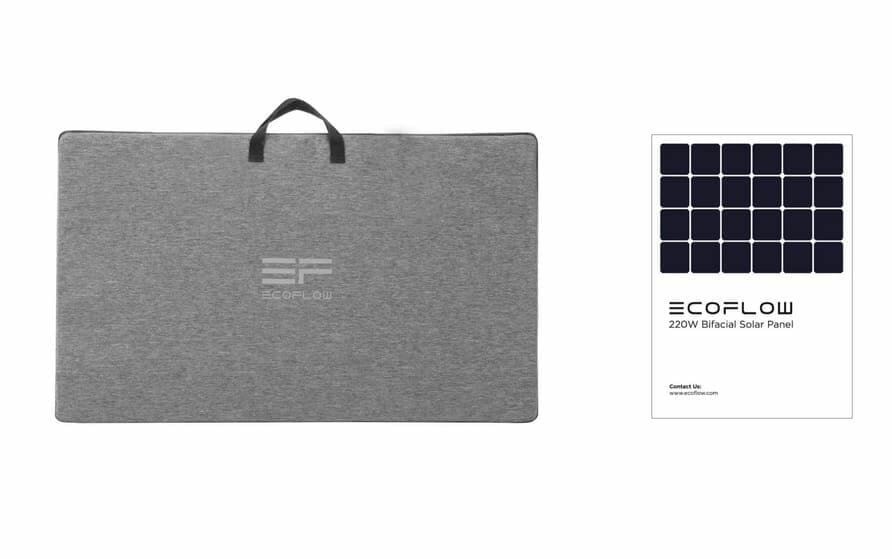
- 220W Bifacial Solar Panel
- 220W Bifacial Solar Panel Protective Case (Kickstand)
- 220W Bifacial Solar Panel User Manual and Warranty Card
- Snap Hooks
- Solar to XT60 Charging Cable
Frequently Asked Questions
In most cases, it is normal for a solar panel not to deliver its full nominal power. Some of the reasons why this happens, as well as some suggestions for getting closer to the nominal power figure, are given below.
1. Light Intensity. The amount of light shining on the panel will result in fluctuations to the power output. You are more likely to achieve nominal power output figures closer to those obtained under test conditions when using the product on a clear day during the midday sun, than when using the product in the morning or later in the afternoon. Weather conditions will also affect the amount of sunlight that shines on the panel. For example, you are much less likely to achieve the figures for nominal power in hazy, cloudy or rainy conditions.
2. Surface Temperature. The temperature of the solar panel surface will also affect the amount of power generated. The lower the surface temperature of the panel, the more power will be produced. For example, solar panels generate more power when used during the winter than during the summer, and this is completely normal. Solar panels generally reach temperatures close to 60°C (140°F) during summer. This reduces nominal power by 13%, despite the higher levels of light shining on the panel.
3. Sunlight Angle. In optimal light conditions, the sun’s rays should remain perpendicular to the surface of the panel for best performance. Power output is only marginally impacted by sunlight hitting the panel within 10° either side this 90° angle.
4. Panel Shading. The surface of the solar panel should not be shaded during use. Shading caused by shadows, foreign objects and glass can all greatly reduce power output.
Performance Issues Caused by Malfunctioning Panels:
If the panel still isn’t generating power or its output remains far below expected nominal power figures after addressing the issues above, there may be an issue with the panel itself.
Please contact Customer Support for assistance.
This depends first and foremost on weather conditions. Generally speaking, on a clear day with no clouds in the sky, sunlight hitting the panel at a 90° angle usually generates 160W–180W of power in the 220W panel.
(Current light conditions are normally 800W–900W/m2 (74.3W–83.6W/ft2) with a panel temperature of 50°C (122°F) under test conditions.
Nominal power ratings are based on 1000W/m2 (92.9W/ft2) in AM1.5 conditions with a panel temperature of 25°C (77°F) under test conditions.
Power output figures close nominal values were normally observed in the midday sun during the winter.)
The operating temperature of the Bifacial Solar Panel is -20°C–85°C (-4°F–185°F).
The panel should be folded into its original shape and stored in its Protective Case (Kickstand), which provides sufficient protection for the product.
To extend the service life of the panel, ensure that the product is not exposed to external forces/impacts when not in use.
The solar panel itself is made of glass and must not be dropped, pierced, bent, or sat on. These actions may break the glass and render the panel unusable.
Any such damage will not be covered by the free warranty.
The front side of the Bifacial Solar Panel has a junction box. This side of the panel generates power by being positioned perpendicular to the sun’s rays. Since the rear side of the panel faces away from the sun, it does not generate electricity in the usual way.
Generally speaking, the rear of the panel uses ambient light to increase the overall performance of the product by up to 5%-25%. This figure is higher if mirrors are used, or when ambient light levels are high.
Using the product with the rear side of the panel facing the sun generates 80% of the power when compared to using the front side.
Using the panel in this way does not have a negative effect on the product.
Yes, but only certain types. The power station used must be compatible with MC4 standards in order to work properly.
In addition, other brands of power station may not offer the same levels of compatibility as EcoFlow-branded power stations, may have lower nominal power ratings, and may not offer the same levels of performance.
Yes, but this is not recommended. While the voltages of the two panels are identical, the current ratings are not.
This means that when the panels are connected in series, the current will be limited to that of the 110W panel and the full performance potential of the 220W panel cannot be released, resulting in a 1+2<3 scenario.
Please purchase panels of the same size if you intend to connect multiple panels in series.
Yes, but this is not recommended. 220W solar panel have a maximum current rating of 12A.
Though these panels can be connected in parallel, DELTA and RIVER series power stations only support a maximum current of 12A.
Parallel connections increase power output by doubling the current, but connecting the panels in this way would result in a 1+1=1 scenario whereby the current is limited to 12A by the connected devices.
We do not recommend connecting the panels in parallel, unless you use a different brand of power station with an input current of 20A or above.
| Weight | 9.5 kg |
|---|---|
| Dimensions | 82 × 183 × 2.5 cm |
| Folded Dimensions | 82*183*2.5cm (32.3*72.0*1.0 in) |
| Weight | Approx. 9.5kg (20.9lbs) |
| Warranty | 12 months |
| Rated Power | 220W Front Side/155W Rear Side |
| Efficiency | 22-23% |
| Open Circuit Voltage | 21.8V (Vmp 18.4V) |
| Short Circuit Current | 13A (Imp 12.0A) Front Side/ 8.8A (Imp8.4A) Rear Side |
| Cell Type | Monocrystalline Silicon |
| Connector Type | MC4 |
Reviews
4.91
/5Based on 11 rating(s)
10 Customer(s) recommended this item
Light weight
Charging power
Noise level
Tech Support
Value for money
Reviewed by 01 customer(s)
Sort by
-
Lance Morrison
Awesome solar panel
First bifacial solar panel I have owned. Must say impressed and all the EcoFlow panel should have been made this way to get the most out of your panels energy. On a sunny direct light I was getting around 150-175 watts out of it. Going to be getting another soon
January 24, 2023Verified ReviewReply -
Leo Lane
Perfect for our needs
Can’t say how pleased I am with my new 220 watt portable solar panel from Ecoflow.. Like other Ecoflow products I’ve purchased, this pane is well packaged to prevent damage and well made. Instructions for setting up the panel are printed on the back of the box.The storage case looks to be well stitched, sturdy and comes with a reinforced base. It also serves as the support for the panel by adding 4 clips attached from the case to the panel. The stiff part of the case is the upright panel and the cloth panel is horizontal on the ground,It was a cloudy day and I was only able to do a quick test during a slight sun break before the rain set in, but I registered 158 watts incoming. It’s best not to do your panel setup during windy conditions, just because these panels can be hard to handle by yourself if it’s windy. I haven’t tested the ambient light reflection ability of the panel yet but looking forward to better weather to do some more tests. So many possibilities.I really like these panels. They are thin, and the 4 panels fold together compacting well so they can fit into the storage/carrying case. I kept the thin foam panel so I could place it as a barrier for the cables. I attached the MC4 extension cable that connects to the Delta Pro also in the case.
January 20, 2023Verified ReviewReply -
Ruben Prince
-
Eloise Henderson
220 solar panel
I’ve got this up and running quickly. I will say that it’s most likely a better unit for traveling. As it is foldable it travels well however that does make it awkward to set up and adjust as the sun moves. I’ve been pleased with the 190 watts I’ve been able to get from it. That’s without setting it up with 100% efficiency. doing do is slightly laborious .
January 9, 2023Verified ReviewReply
Only logged in customers who have purchased this product may leave a review.
Product Enquiry
You may also like…
Mountable Solar Panels
Related products
Solar Panel by Type
Foldable & Flexible Solar Panels
Solar Combo

